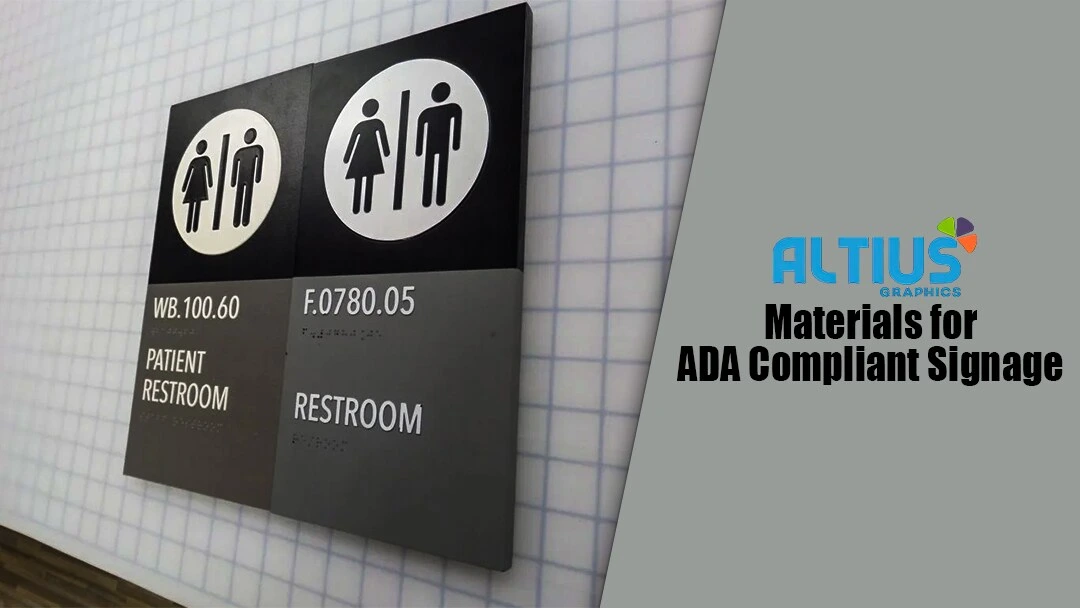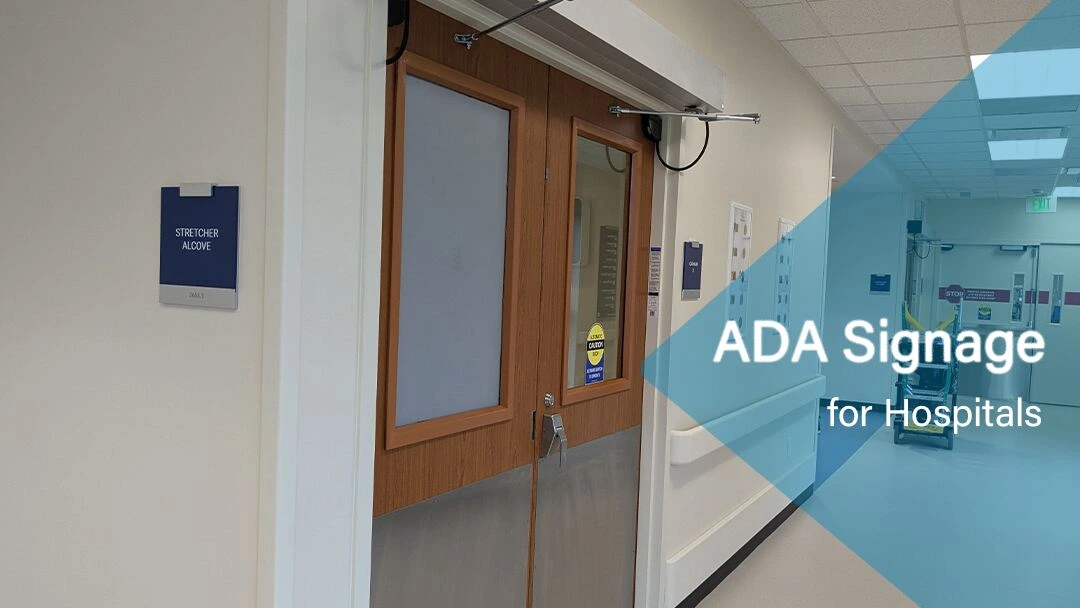Deciding which material to suggest to clients depends on their budget, environment, and design restrictions. But price is not the only factor in the decision making, anymore. Quality and performance play a major role as businesses and institutions accept the reality that ADA compliant signage is here to stay. The creation and usage, of ADA signs is one of the things buildings and businesses need to do in order to be considered ADA compliant. Keep in mind that the material is as important as the message because if the material fails, then the purpose is lost.
As such, there are specific types of materials that can be used for these ADA signs. Sign manufacturers often suggest different types of materials to their clients according to usage and sign location. Let’s look at some of the more common materials on the market today and learn which is most appropriate for different budgets, environments and designs.
Outdoor signs may require materials that are tough and resilient since these will be exposed to the weather extremities. These signs will also be exposed to other possible forms of deterioration. This is why it is best that these be made with the use of materials that can stand up to these. For outdoor signs, material choices often include high impact plastics, zinc, bronze and magnesium. Melamine is also an ideal material for outdoor use due to a number of reasons. Aside from being strong enough to resist alkalis and acids, signs made with this material are difficult to deface, especially when the letters are molded or sandblasted into the sign. Acrylic is also another option that people have when it comes to outdoor signage.
While for indoor signs, you can avoid using materials, needed for outdoor signs. While the stuff used for outdoor signs can be used indoors too, some people choose less resilient materials like photopolymer, that are best suited for indoor only for indoor use in order to save some money. This is because of the fact that most of the materials used for outdoor sign creation do cost a bit more due to their tough nature. Indoor ADA signs can be manufactured using plastic, acrylic and metal. Some signs can also be made using marble and stone, although this will usually depend on what kind of sign you are having made. If the indoor signs you need are for overhead use or are signs that do not need to have Braille or tactile letters on them, then the choices you have for materials are rather unlimited. Signs that require Braille on them will require certain materials be used in order for these to be compliant. Some signs may not be deemed compliant when materials that do not allow for domed Braille are used, like marble or stone. This is where materials that can be engraved, etched or molded come in.



